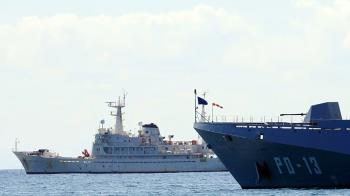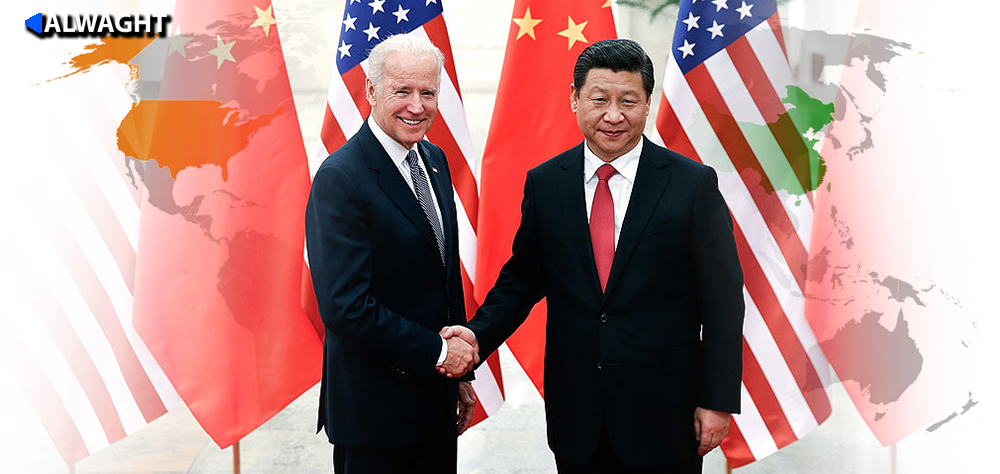Alwaght- On the tenth day of Biden’s presidency, the US has deployed four B-52 strategic bombers to Guam in a bid to strengthen deterrence and counter China, American media reported.
The four long-range bombers were redeployed to their base in the American exclave after three years of absence. Many experts suggest that this measure by Biden’s administration is an apparent message to China, signaling that strictness on Beijing will increase more than ever under the new president.
The Asia-Pacific significance in the US foreign policy
Asia, in particular its eastern region, has always been of paramount importance to Washington since its eatery to the international equations after World War I. But it has never been a top priority for Washington's diplomatic apparatus.
However, over the past decade, China's growing presence in the international equations as an emerging rival to the US, the dominance of the geo-economic approach to world politics, which means increasing the Asia’s role in the global economy and US foreign trade, along with existence of Washington's allies made Asia-Pacific region a major focus point of the American foreign policy. The concentration on China as the center of the US foreign policy should be traced back to the Barack Obama presidency.
In fact, the Obama administration's decision to announce “pivot to East” strategy was a clear sign of American embracement of a realistic foreign policy. The decision to focus more on Asia first appeared in an article published by then Foreign Secretary Hillary Clinton in the spring of 2011 in Foreign Policy magazine. She held that after a decade of spending US resources in Afghanistan and Iraq, Washington needed to shift its attention to the more important region of Asia for the next decade.
This approach by Obama and Clinton signaled a significant shift in the traditional American policy. While Asia has always been important to the White House, it has never been a top foreign policy priority before Obama. Obama administration’s officials argued that the US should no longer focus on secondary concerns in areas such as West Asia, but rather on more important priorities in Asia-Pacific. This approach continued in President Donald Trump administration in the form of the strategy to wage a trade war against China. And now Biden is heir to this strategy.
Biden’s policy in Asia-Pacific region
Many political observers see Biden administration's approach to the Asia-Pacific region as a perfect example of the Barack Obama administration's strategy. But it is important to note that in reading the new US administration's strategy for East Asia, especially China, the situation has changed to a large extent, and Trump's four-year trade war is added to Obama-era anti-Chinese toughness.
The dominant view among Biden's orbit is that China is the most important threat to the power and position of the US in international order in the long run. So, Washington's strategy toward West Asia needs a review and the focus should be directed to curbing China. As part of this strategy, the new US Secretary of State Tony Blinken instructed his personnel to restrict the West Asia division and instead broaden the activities of East Asia division in the State Department. Also, Biden’s National Security Advisor Jake Sullivan has changed West Asia and Asia staff. He downsized the West Asia policy team and upsized the Indo-Pacific team.
Biden administration's shift in Asian vision and priorities in foreign policy, on the other hand, reflects the US concerns about China's rapid growth over the past two decades. Under the new structure of the US National Security Agency, the staff of the Indo-Pacific division will have a wider range of responsibilities, while this will be vice versa to West Asia. The Asia-Pacific division is now run by Kurt M. Campbell and three other prominent officials. These three each run a division, including China, South Asia, and Russia and Central Asia. This comes while an Obama-era diplomat said that under Obama, China was not addressed as an independent division in the US foreign policy apparatus.
All the evidence suggests that the focus on controlling China and, of course, North Korea will be at the heart of the Biden's foreign policy agenda. Following Trump's election defeat, the North Korean government has stepped up its missile activities, raising concerns among the national security team and the State Department. The deployment of B-52 strategic bombers to Guam is a signal of Washington’s severe worries not just about China power gain but also East Asia developments as a whole.
In the days following Biden's inauguration, attacks on China have increased sharply. White House spokeswoman Jen Psaki has strongly criticized what she called “China authoritarianism” at home and abroad, citing Beijing as a threat to the American national security.
Given these picture of the initial days of Biden presidency, some points are mentionable regarding the US general strategy for the Asia-Pacific region under the new president.
- Biden's foreign policy team pursues even more broadly the pivot to Asia strategy that began during Obama's presidency and continued under Trump.
- Unlike Trump, by taking a multilateral approach Biden is likely to put on his agenda building a global coalition against Beijing.
- Biden will possibly maintain and even increase military presence in the region, especially in South and East China seas to deter Beijing’s ambitions in these regions and also efforts to control waterways like Malacca, Sunda, and Lombok straits.
- The Biden administration wants to steer clear of entry to a new crisis in West Asia and instead focus on a global campaign for a coalition against Chinese influence.
- The new US administration also seeks to broaden ties with Taiwan and use Taiwan cause as China’s vulnerability spot.
- The new US government, in addition to security confrontation with China, is likely to increase economic activity in East Asia all to impair Chinese economic sway and improve its suffering economy.
- It is noteworthy that in the middle of crises and issues that Biden administration should deal with as home travails— among them the coronavirus crisis and deep internal divisions— it does not want to foment a conflict in East Asia. Rather, Washington in the new era intends to increase its deterrence to avoid involvement in a large crisis.



























